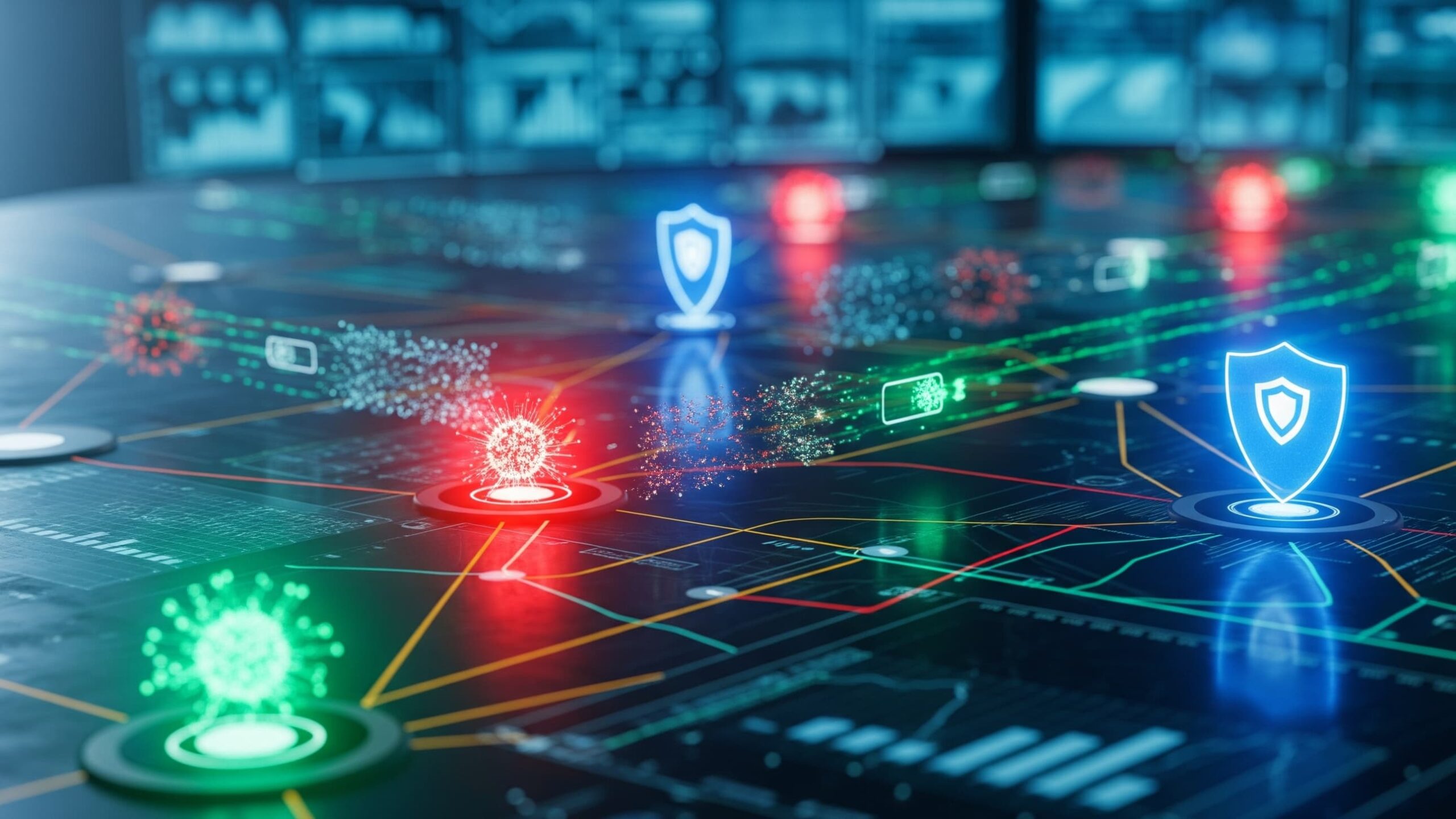Address
304 North Cardinal St.
Dorchester Center, MA 02124
Work Hours
Monday to Friday: 7AM - 7PM
Weekend: 10AM - 5PM
Address
304 North Cardinal St.
Dorchester Center, MA 02124
Work Hours
Monday to Friday: 7AM - 7PM
Weekend: 10AM - 5PM

Understanding the current threat landscape is no longer optional, it’s a requirement for survival at this stage. Phishing campaigns, ransomware attacks, and advanced persistent threats are growing more sophisticated, often fueled by new technologies.
Businesses that wait to react are already a step behind. The real key lies in anticipating attacks by addressing weak points such as supply chain vulnerabilities, cloud exposures, and industry-specific risks. From consulting with MSSPs, we’ve seen how proactive strategies turn potential crises into manageable challenges.
Keep reading to learn how mastering the current threat landscape strengthens defenses and safeguards long-term security.
Cyber threats are getting more complex and frequent every year. We see attackers using both old tricks and new technology. Many businesses now face daily attacks, not just once in a while. Ransomware, phishing, and AI-powered threats top the list. Attackers use stolen credentials, exploit software flaws, and target the weakest link in the chain.
A real story comes to mind. We worked with a healthcare client who thought their systems were safe, only to have attackers break in through a forgotten vendor account. Their files were locked, and patient data was held for ransom. This is happening more often, and not just in healthcare.
That’s why it’s essential for organizations to focus on core business cybersecurity, letting experts handle the evolving threat landscape.
A few attack methods show up again and again. Attackers prefer what works.
We often see the same patterns during audits. Attackers don’t need to be too clever if someone lets them in. That’s why many organizations choose to improve cybersecurity posture through outsourcing. It’s not just about tools but also about following MSSP security fundamentals and concepts that guide how threats are managed proactively.
Threats vary a bit by location, but most businesses worry about the same things:
Industrial and healthcare clients get hit the hardest, but no business is immune.
Stats we’ve seen (1):
Given the rising complexity and frequency of these threats, many organizations are now rethinking their approach and choosing to understand why outsourcing cybersecurity operations matters to stay protected without overburdening internal teams.
Ransomware keeps changing. Attackers don’t just lock files anymore. They steal sensitive data and threaten to leak it, pushing businesses to pay up. Some skip encryption and just go straight to extortion.
Healthcare and manufacturing are frequent targets. We’ve seen a hospital shut down for days, losing access to patient records, while factories have had to halt production.
Phishing remains one of the most effective threats. Attackers use AI to craft convincing emails, making it harder to spot the fake ones.
We’ve seen employees fooled by emails that look like they’re from their boss, even including voice messages that sound real.
APTs are well-funded and patient. They often work for nation-states and go after big targets like governments or critical infrastructure. Their attacks are hard to spot and can go on for months or years before anyone notices.
During product audits, we’ve seen signs of APT activity, strange outbound traffic, unusual admin logins, and evidence of data exfiltration. Most companies only notice after a breach.
Supply chain attacks are growing fast. Attackers look for weak links among suppliers. Once inside, they can move to bigger targets.
We’ve helped clients trace a breach back to a small vendor with poor security. It only takes one gap.
Cloud systems bring flexibility but also new risks. Many breaches come from simple mistakes, like misconfigured storage or weak passwords.
We recommend regular testing and validation of cloud security setups. Automated tools can help, but they’re only as good as the rules set up to guide them.
Zero-day exploits are flaws that no one knows about yet. Attackers race to use them before patches are released.
We’ve audited systems after zero-day attacks. Usually, the first sign is strange behavior, unexpected network traffic or systems acting out of character.
Different industries face unique risks. Targeted intelligence helps businesses focus on the threats that matter most to them (2).
During our audits, we’ve seen hospitals scrambling to restore systems and manufacturers losing days of output. Each sector needs its own strategy.
Understanding the current threat landscape requires vigilance and strategic foresight. Businesses should use several layers of protection, keep up with new security risks, and teach their teams how to spot threats.
By checking their vendors and using updated security tools, organizations can spot threats early. With the right help in choosing and using the best technology, they can build stronger protection.
To learn how to enhance your security posture, consider joining our expert consulting services here.
The current threat landscape in cybersecurity includes various risks like ransomware, malware, and phishing attacks. Cybercriminals often use advanced persistent threats (APT) to exploit vulnerabilities. Understanding these threats helps organizations improve their cyber defense strategy and secure their data.
Ransomware can lead to significant data breaches, resulting in financial losses and reputational damage. Companies must prioritize incident response and threat intelligence to mitigate these risks. By enhancing endpoint security, businesses can protect themselves against such cyber attack vectors.
Threat intelligence helps organizations understand emerging threats like zero-day exploits and DDoS attacks. By analyzing threat actor behavior, companies can strengthen their security controls and improve network security. This proactive approach boosts overall cyber resilience.
Social engineering tactics trick individuals into revealing sensitive information, leading to credential theft. This type of attack often serves as a gateway for more severe threats like data exfiltration or insider threats. Raising security awareness is essential to prevent these incidents.
Cloud security is crucial for protecting sensitive data and ensuring compliance with regulations. Misconfigurations can expose organizations to cyber risks such as data breaches. Implementing multi-factor authentication (MFA) and regular vulnerability assessments can enhance cloud security.